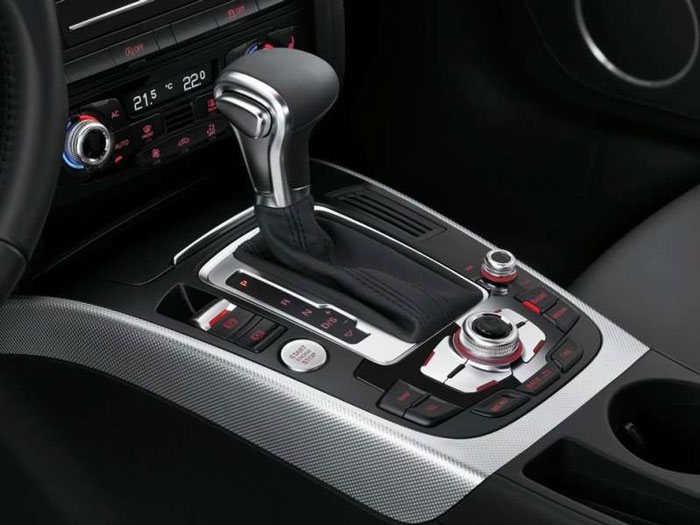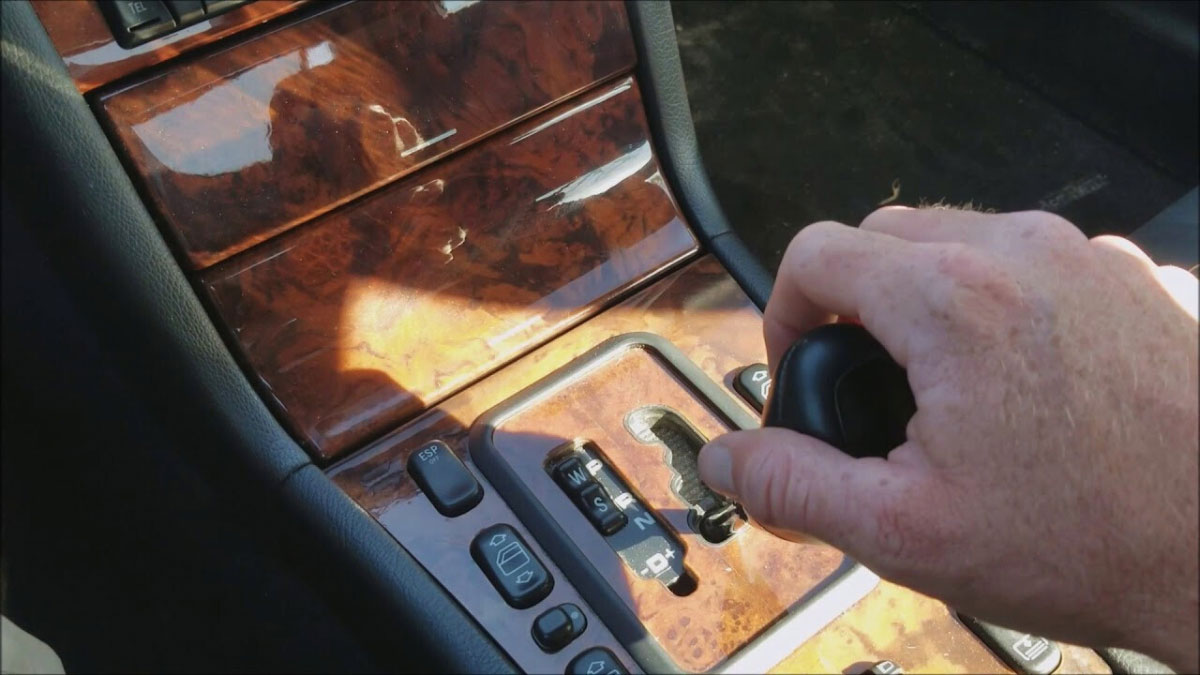Ever wondered how you can have the best of both worlds in your car—automatic ease and manual control? That’s where Tiptronic transmission comes in. This innovative system offers drivers the flexibility of an automatic transmission with the option to switch to manual mode when desired. It’s like having two cars in one, making every drive more engaging and versatile.
I find the Tiptronic system fascinating because it blends technology and driver preference seamlessly. Understanding its mechanism can not only enhance your driving experience but also give you a deeper appreciation for automotive engineering. So let’s jump into the inner workings of Tiptronic transmission and see what makes it tick.
What Is Tiptronic Transmission?
Tiptronic transmission is a type of automatic transmission that offers the driver the ability to switch to manual control. This transmission system combines the convenience of an automatic gearbox with the authority of a manual shift, integrating technology and driver preference for an engaging driving experience.

Definition and Overview
Tiptronic transmission originated from Porsche, enhancing automatic transmissions with manual shifting features. It allows drivers to override the automatic mode to select gears manually. This system is built into many high-performance and luxury vehicles, offering an adaptable driving experience.
- Automatic Transmission: A gear system that automatically changes gear ratios as the vehicle moves.
- Manual Mode: A feature that allows the driver to manually control gear selection via gear lever or paddle shifters.
- Override Function: The ability to switch from automatic to manual mode during driving.
Key Benefits
Tiptronic transmission provides several advantages to drivers, merging the best of both transmission worlds.
- Driver Control: Allows manual gear shifting, providing greater control over the vehicle’s performance, particularly useful in conditions requiring precise speed management such as mountainous terrain.
- Convenience: Offers the ease of automatic shifting, ideal for city driving where frequent gear changes can be cumbersome.
- Enhanced Performance: Allows for quicker and smoother gear transitions compared to traditional automatic transmissions, potentially improving acceleration.
- Safety: Reduces the risk of engine over-revving by automatically shifting if the driver fails to, protecting the engine from damage.
- Versatility: Provides the flexibility to switch seamlessly between automatic and manual modes, catering to various driving preferences and conditions.
How Tiptronic Transmission Works
Understanding the Tiptronic transmission mechanism involves examining its core components and operation principles. Developed by Porsche, this system integrates manual control into an automatic transmission setup.
Core Components
The Tiptronic transmission relies on several key components to function:
Gearbox: An automatic gearbox serves as the foundation. It includes planetary gears and a torque converter.
Electronic Control Unit (ECU): Manages gear changes and monitors driving conditions. It switches between automatic and manual modes based on driver input.
Manual Shift Gate: Located on the central console, it enables manual gear selection. It typically includes a “+” and “-” to shift gears up or down.
Paddle Shifters: Mounted on the steering wheel. They offer easy access to manual shifting without taking hands off the wheel.
Operation Mechanism
The operation of a Tiptronic transmission can be broken down into a few steps:
- Startup:
- The system begins in automatic mode by default.
- The ECU uses sensors to determine ideal shifting points.
- Manual Mode Activation:
- Drivers move the gear lever to the manual shift gate.
- Alternatively, pressing the paddle shifters activates manual mode on some models.
- Manual Shifting:
- Pushing the lever forward or using the “+” paddle shifts up a gear.
- Pulling the lever backward or using the “-” paddle shifts down a gear.
- The ECU ensures gear changes align with engine speed and load.
- Reverting to Automatic:
- Remaining idle in manual mode for a set period.
- Moving the gear lever back to the automatic shift gate.
This seamless mix offers both automatic convenience and manual control, making Tiptronic transmission suitable for various driving styles and conditions, enhancing the driving experience.
Tiptronic vs. Traditional Automatic Transmission
Understanding the distinctions between Tiptronic and traditional automatic transmissions helps drivers make informed decisions based on their preferences and needs.
Key Differences
1. Control Flexibility:
Tiptronic:
Provides manual shifting capabilities alongside automatic mode. Drivers can override the automatic gear selection by using a gear lever or paddle shifters.
Traditional Automatic:
Operates purely in automatic mode with no manual shifting option. The vehicle’s Electronic Control Unit (ECU) manages gear changes based on speed and throttle inputs.
2. Gear Selection:
Tiptronic:
Drivers manually select gears by nudging the gear lever or using paddle shifters. This can lead to a more engaging driving experience, especially on winding roads or during spirited driving.
Traditional Automatic:
Relies entirely on the ECU to determine the optimal gear for various driving conditions, emphasizing comfort and ease of use without requiring manual intervention.
3. Driving Experience:
Tiptronic:
Transforms the driving experience by allowing greater involvement from the driver. It combines the ease of an automatic with the control of a manual transmission, catering to both relaxed and dynamic driving styles.
Traditional Automatic:
Focuses on providing a smooth and hassle-free driving experience. It’s ideal for commuters and those who prioritize comfort over the performance advantages of manual control.
Pros and Cons
Pros of Tiptronic:
- Enhanced driver control with manual shifting options.
- Versatile driving styles accommodating both relaxed and spirited driving.
- Improved performance in specific driving scenarios like hill descents.
Cons of Tiptronic:
- Complexity might lead to increased maintenance costs.
- Can be overwhelming for drivers unfamiliar with manual shifting mechanisms.
- Typically found in higher-end vehicles, increasing purchase cost.
Pros of Traditional Automatic:
- Simplified driving experience with fully automatic gear changes.
- Generally lower maintenance requirements due to less complex mechanics.
- Ideal for urban driving and heavy traffic conditions.
Cons of Traditional Automatic:
- Limited driver engagement due to lack of manual control.
- May not provide the same level of performance flexibility for varied driving conditions.
- Potentially less efficient in aggressive driving scenarios.
For those seeking a balance between convenience and engagement, the Tiptronic transmission offers a compelling option. It provides the best of both automatic and manual worlds, adapting to diverse driving needs. Traditional automatic transmissions, but, continue to serve drivers who prioritize ease and comfort in routine commutes. Understanding these factors helps in choosing the transmission that aligns with individual driving preferences and requirements.
Advantages of Tiptronic Transmission
Tiptronic transmission offers several distinct advantages that enhance the driving experience, combining the best features of automatic and manual transmissions.
Control Flexibility
Tiptronic transmission grants drivers the ability to switch between automatic and manual modes seamlessly. This dual functionality lets me enjoy the ease of automatic shifting in heavy traffic and the precision of manual control when driving on open roads.
Enhanced Driving Experience
By enabling manual gear selection, Tiptronic allows me to tailor my driving to various situations. For example, I can downshift for extra power during overtaking or upshift early to save fuel. This adaptability makes every drive more enjoyable and engaging.
Safety Benefits
Manual gear selection in a Tiptronic system can contribute to safer driving conditions. I can downshift manually to use engine braking, reducing wear on the brake components and providing better control during downhill driving.
Reduced Wear and Tear
The ability to switch between manual and automatic modes helps in managing the stress on the transmission system. Manual mode reduces the loads on the automatic clutch and torque converter, potentially extending the transmission’s lifespan.
Fuel Efficiency
Tiptronic transmission can enhance fuel efficiency by allowing manual control over gear selection. In scenarios where I can predict the driving conditions, I could choose gears that ensure optimal fuel use, such as staying in higher gears on level highways.
- Seamless Switching: Effortlessly toggle between manual and automatic modes using paddle shifters or gear lever.
- Manual Override: Take manual control without disrupting the drive, enhancing driver engagement.
- Engine Braking: Downshift manually to use the engine for slowing down, aiding in better vehicle control and reducing brake wear.
- Adaptable Driving: Tailor gear shifts to immediate driving needs, whether for enhanced performance or fuel economy.
- Longevity: Less stress on transmission components, potentially extending the system’s life span.
These attributes cater to drivers seeking an engaging, flexible, and safe driving experience, providing solutions for varied driving needs.
Common Issues and Troubleshooting
Keeping a Tiptronic transmission in optimal condition involves identifying common problems and applying effective troubleshooting methods. Below are details on typical problems and maintenance tips.
Typical Problems
Understanding common Tiptronic transmission issues can help you troubleshoot more efficiently.
Transmission Slipping: The transmission may unexpectedly slip out of gear, often caused by low transmission fluid or worn-out clutch plates.
Delayed Shifting: A delay in shifting can indicate a malfunctioning Electronic Control Unit (ECU) or damaged shift solenoids.
Erratic Shifting: Erratic or harsh shifting might result from a faulty ECU, corrupted software, or hydraulic issues within the transmission.
Fluid Leaks: Transmission fluid leaks often arise from damaged seals, gaskets, or lines, possibly leading to lower fluid levels and slipping gears.
Maintenance Tips
Regular maintenance helps prevent issues and extend the life of your Tiptronic transmission.
Check Fluid Levels: Ensure the transmission fluid is at the correct level, replacing it as specified by the manufacturer. Regularly check for signs of leaks.
Update Software: Keep the ECU’s software updated. Software updates can improve shifting performance and address known issues.
Inspect and Replace Worn Components: Regularly inspect the transmission’s internal components, such as clutch plates and solenoids, and replace any worn-out parts promptly.
Monitor for Warning Signs: Pay attention to any unusual noises like grinding or clunking, and erratic behavior. Address these issues immediately to prevent more severe damage.
Keeping these common problems and maintenance tips in mind ensures your Tiptronic transmission runs smoothly. This approach reduces downtime and improves overall driving experience.
Conclusion
Revealing the mechanism of Tiptronic transmission opens up a world of driving possibilities. By understanding its core components and advantages, I’ve found that it offers unmatched control and flexibility. Staying on top of maintenance and being aware of common issues ensures that my driving experience remains smooth and reliable. For anyone looking to enhance their driving adventures, the Tiptronic system is a remarkable option that delivers both performance and peace of mind.
Frequently Asked Questions
How do you change Tiptronic gears?
Most Tiptronic systems use paddles behind the steering wheel. The right paddle is for upshifting, and the left paddle is for downshifting. Alternatively, you can use the manual shift gate alongside the gear lever. If preferred, simply use automatic mode.
Are Tiptronic transmissions reliable?
Yes, Tiptronic transmissions are generally reliable and long-lasting. Regular maintenance like fluid changes, as specified in the owner’s manual, ensures their durability. For frequent track use, more frequent fluid changes are advisable.
Is Tiptronic the same as CVT?
No, Tiptronic and CVT (Continuously Variable Transmission) are different. Tiptronic uses a conventional automatic gearbox with manual override capabilities, while CVT operates on a pulley system for seamless gear changes without defined steps.
What is the disadvantage of Tiptronic transmission?
Tiptronic systems can be more complex and expensive to repair compared to traditional automatic or manual transmissions. Additionally, switching between manual and automatic modes might feel tedious in certain driving conditions.
How does Tiptronic gearbox work?
Tiptronic gearboxes function like automatic systems, with the car’s onboard computer shifting gears. Manual mode is engaged using either a secondary shift gate on the gear lever or steering-mounted paddles, allowing for manual gear control.

